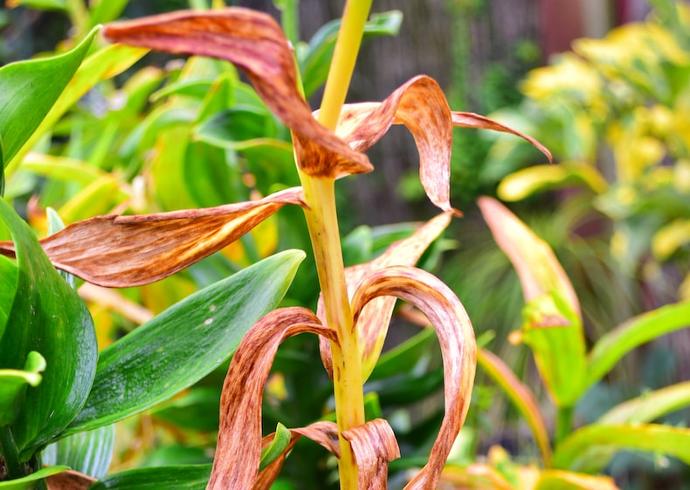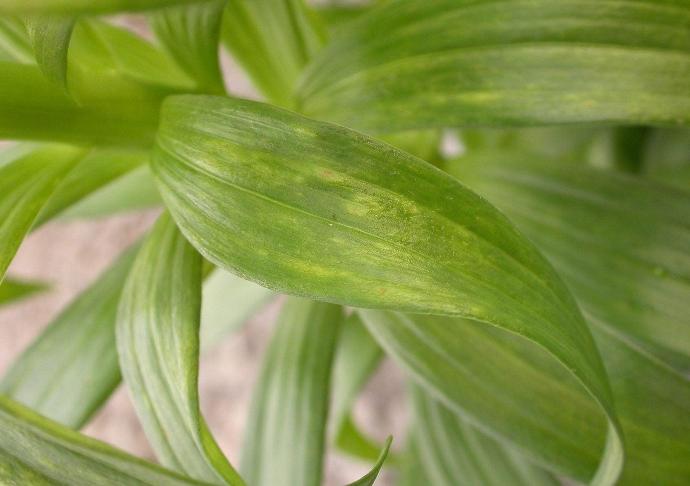Asiatic Lily Plant
Asiatic Lilies are outdoor perennials that prefer well-draining soil and full sun to partial shade. Water regularly, keeping the soil consistently moist. Mulching helps retain moisture and suppress weeds. Remove spent flowers to encourage continuous blooming.
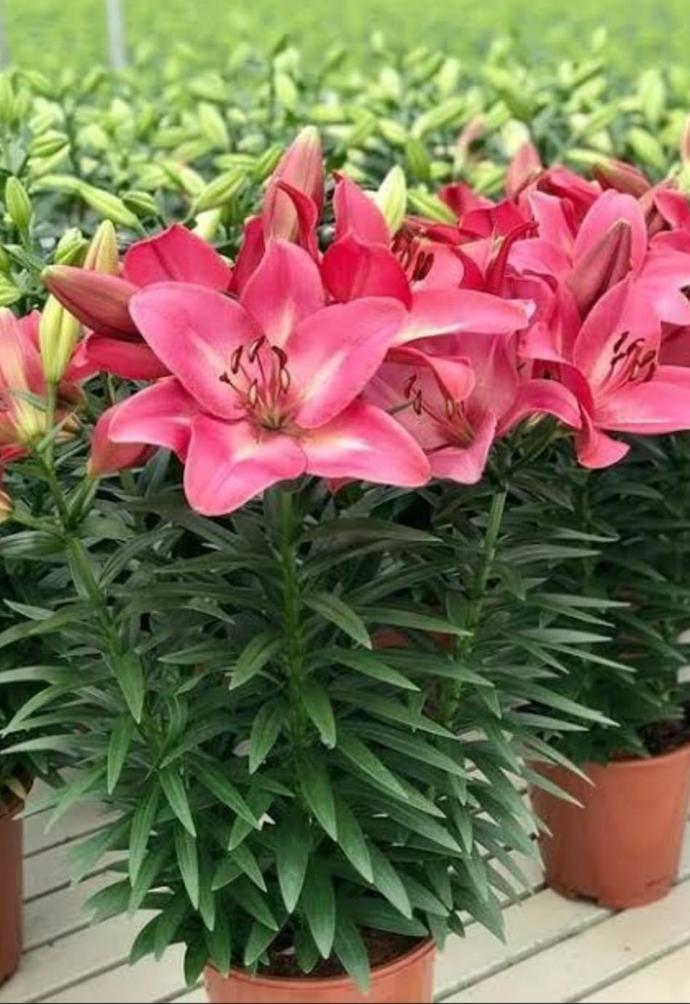
Habit
Perennial
Height
0.6-1.2 m
Growth
Moderate
Soil
Well-drained loamy soil
Shade
Full Sun to partial shade
Moisture
Moist
Edible
No
Medicinal
No
Origin
Asia
Climatic Condition
Temperate
Temperature (°)
15-25°C
Humidity (%)
60-70%
Potting media
Garden soil
Fertilizers
High in phosphorus
Watering
Regular watering; keep soil moist
Plant Weight
500-800 g
Flowering Time
Summer
Soil Ph level
6.0 - 6.5
Water Ph level
6.0 - 7.0
Soil EC
Medium
Yield Per Plant
12 flowers , stems per sqm-30 to 40
NPK ratio
15:30:15
life Span
Perennial
Health Benefits
Suggested Grow Media or Potting Mix ?
50% peat moss, 25% perlite, 25% bark
Suggested Fertigation/Fertilizers
Fertilize every 2-3 weeks with a balanced fertilizer.
Common Diseases and Remedies
Lily mosaic virus, botrytis bulb rot.
Mottled Or streaked yellow and green patterns on leaves, stunted growth, rotting bulbs, foul odour.
Remove and destroy infected plants, insecticidal soap, neem oil.
HEALTH BENEFITS
1. Antioxidant Properties: Asiatic lilies contain antioxidants that can help protect against oxidative stress and inflammation.
2. Anti-Inflammatory Properties: The plant has anti-inflammatory properties that can help reduce inflammation and alleviate symptoms of conditions such as arthritis.
3. Cardiovascular Health: Asiatic lilies may help support cardiovascular health by reducing cholesterol levels and blood pressure.
4. Digestive Health: The plant has been traditionally used to treat digestive issues such as diarrhea and dysentery.
5. Antimicrobial Properties: Asiatic lilies have antimicrobial properties that can help protect against infections.
6. Skin and Hair Benefits: The plant's antioxidants and other compounds may help promote healthy skin and hair.
7. Stress Relief: Asiatic lilies have been traditionally used to help reduce stress and anxiety.
What Is An Asiatic Plant?
Asiatic Lily is a species of Lily in the genus Lilium. It is native to Asia and is known for its large flowers that come in many colors such as white, yellow, orange, pink and red. Asiatic lilies are popular in the garden because of their bright colors and pleasant scent, and are also available as cut flowers. They are also easy to grow, making them popular among gardeners.
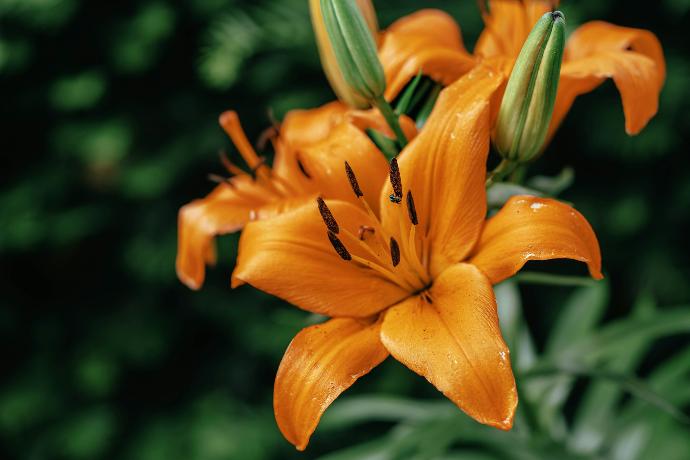
What Are The Different Types Of Asiatic Lily Plant?
There are many different species of Asiatic lily plants, each with its own unique characteristics. Some popular types include:
1. Black Out :
This variety has dark red, almost black, yellow-speckled flowers. a
2. Little Bee :
This flower has small, bright yellow flowers with black dots.
3. Little Spirit :
This flower has small white flowers with a green center.
4. Tiny Padhye :
This flower has small white flowers with red petals.
5. Little Pearl :
This flower has small white flowers with a yellow center.
How To Care Asiatic Lily
Location
Asiatic lilies thrive in well-drained soil, in full sun and partial shade. They prefer slightly more acidic than neutral soil pH (around 6.0 to 7.0). They should be planted in a location where they will receive at least 6 hours of direct sunlight per day. It is also important to plant it away from strong winds because its long stems can be easily damaged. In addition, Asiatic lilies should be planted in a place protected from frost, as they cannot withstand falling.
Sun shine
Asiatic lilies need full sun or partial shade to thrive. They should be planted in a location where they will receive at least 6 hours of direct sunlight per day. However, they can tolerate some shade as long as they receive enough sun to bloom, especially in hot climates. It's worth noting that more shade can result in fewer flowers and weaker stems.
Soil
Asiatic lilies prefer well-drained, slightly acidic to neutral soils (pH 6.0 to 7.0). They do not tolerate water or heavy clay because these can cause slight rot. Sandy or loamy soils are ideal for Asiatic lilies because they provide good drainage and allow the eyes to develop well. If your soil is heavy or clayey, you can increase drainage by adding organic matter such as compost or peat moss to the soil before planting. This will help create a good environment for the bulbs to grow and develop.
Hydration
Asiatic lilies need proper watering, especially during the growing season. Water deeply once or twice a week, depending on weather and soil. The soil should be kept even but not waterlogged as this could cause the bulbs to rot. It is important to water the roots of the plant and not to wet the leaves, as this can cause fungal diseases. In hot, dry weather, Asiatic lilies need to be watered more frequently to prevent the soil from drying out completely.

Nourishment
Asiatic lilies benefit from regular cultivation, which promotes good growth and abundant flowering. A balanced, slow-release fertilizer with an NPK ratio of 10-10-10 or similar is suitable for Asiatic lilies. Fertilize in early spring, when the plant begins to emerge from dormancy, and again in mid-summer, after the plant has bloomed. Follow the manufacturer's instructions for application and method, and remember to water thoroughly after fertilizing to help nutrients reach the roots. It's also a good idea to mulch the base of your plants with organic matter, such as compost or shredded leaves, to help retain moisture and reduce weeds.
Issues
Growing Asiatic lilies can be a wonderful experience, but some problems can arise. Here are some similarities:
1. Pests and Diseases: Asiatic lilies suffer from diseases such as aphids, thrips and red lily bugs. Diseases such as gray mold, root rot, and mosaic disease can affect them. a
2. Soil and Drainage: Asiatic lilies like well-drained soil. If the soil is too heavy or compacted it can cause root rot. Conversely, if the soil is too sandy it cannot retain enough moisture.
3. Water: Too much water or deep water becomes a problem. Asiatic lilies also need water, but they don't like sitting on the ground.
4. Sun: Asiatic lilies like full sun, but can also tolerate partial shade. But too much shade can result in weak stems and fewer flowers.
5. Fertilization: Asiatic lilies benefit from regular fertilization, but too much fertilizer can cause excessive foliage growth, which can damage the flowers.
What are the benefits of Asiatic lilies?
Asiatic lilies have many beautiful and useful properties:
1. Beautiful Flowers: Asiatic lilies are known for their beautiful and colorful flowers. They come in many colors, including white, yellow, orange, scarlet and scarlet, and often have interesting patterns and symbols.
2. Long Blooming Time: Asiatic lilies usually bloom in late spring or early summer, and flowers can persist for weeks. Its long flowering period gives long-lasting color to the garden.
3. * Low maintenance *: Asiatic lilies are low maintenance plants. Once established, they require less maintenance than watering and fertilizing.
4. Versatility: Asiatic lilies can be grown in many places, including flower beds, pots and containers. They can also be used to cut flowers.
5. * Attracts Pollinators *: The colorful flowers of Asiatic lilies attract pollinators such as bees and butterflies to the garden, contributing to a healthy ecosystem.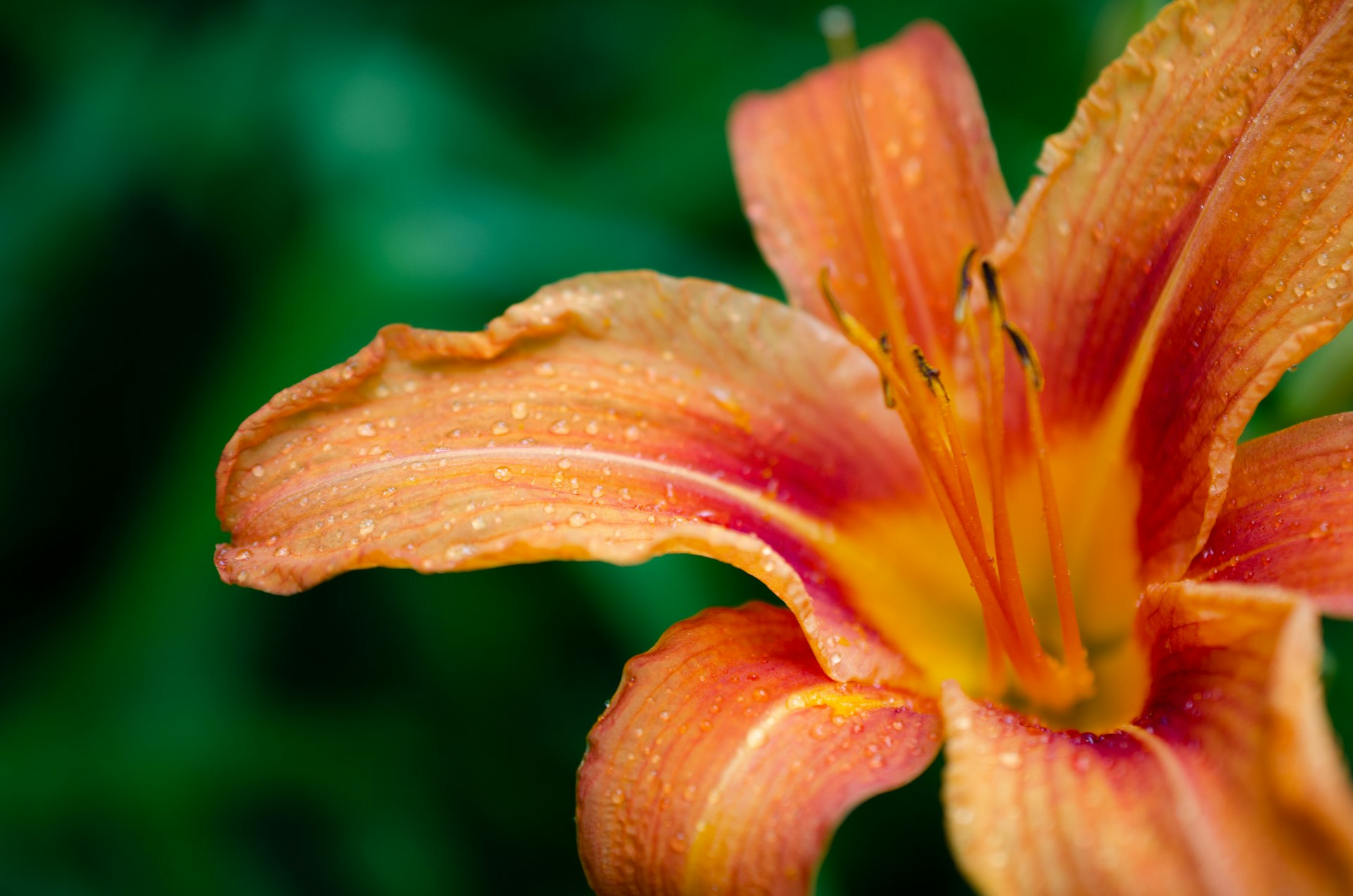
FAQ‘s About Growing Asiatic Lilies?
1. How to care for Asiatic Lily plants?
Asiatic lily plants involves several important steps:
1. Water: Asiatic lilies love normal soil, but they do not like standing in water. Water deeply once or twice a week, depending on weather and soil. Avoid overhead watering as it will cause fungal diseases.
2. Fertilization: Fertilize Asiatic lilies in the spring when new growth appears and after flowering. Use a balanced solution such as a 10-10-10 or 5-10-10 formula and follow the manufacturer's instructions.
3. Mulch: Use a layer of mulch around Asiatic lilies to help retain moisture, reduce weeds and control soil temperature. Use an organic mulch such as shredded bark or compost and cover it to a depth of 2 to 4 inches. Do not mulch near the base of the plant as this will cause rot.
2. What are the uses of the Asiatic lily plant?
Asiatic lilies have many uses, both practical and decorative:
1. Ornamental
2. Attracts Pollinators
3. Medical Use
4. Cultural significance
3. Can Asiatic lilies be grown indoors?
Yes, Asiatic lilies can be grown indoors, but they have specific light, temperature and humidity requirements that must be met for optimum growth. Here are some tips for growing Asiatic lilies indoors:
1. Light
2. Temperature
3. Humidity
4. Soil
5. Water
6. Fertilization
7. Pests and Diseases
4. What type of pot is best for growing Asiatic lily plants?
When choosing a pot to grow Asiatic lilies, it is important to consider many things such as size, material and water flow. Here are some tips for choosing the best plants for Asiatic lilies:
1. Size
2. Materials
3. Drain
4. Color
5. Weight
5. Where can I buy Asiatic lily plants?
Asiatic lily plants from a variety of places, including:
Local Garden Centers and Nurseries
Specialty Plant Catalogs
Local Farmers
Garden Shows and Plant Sales
Friends and family
